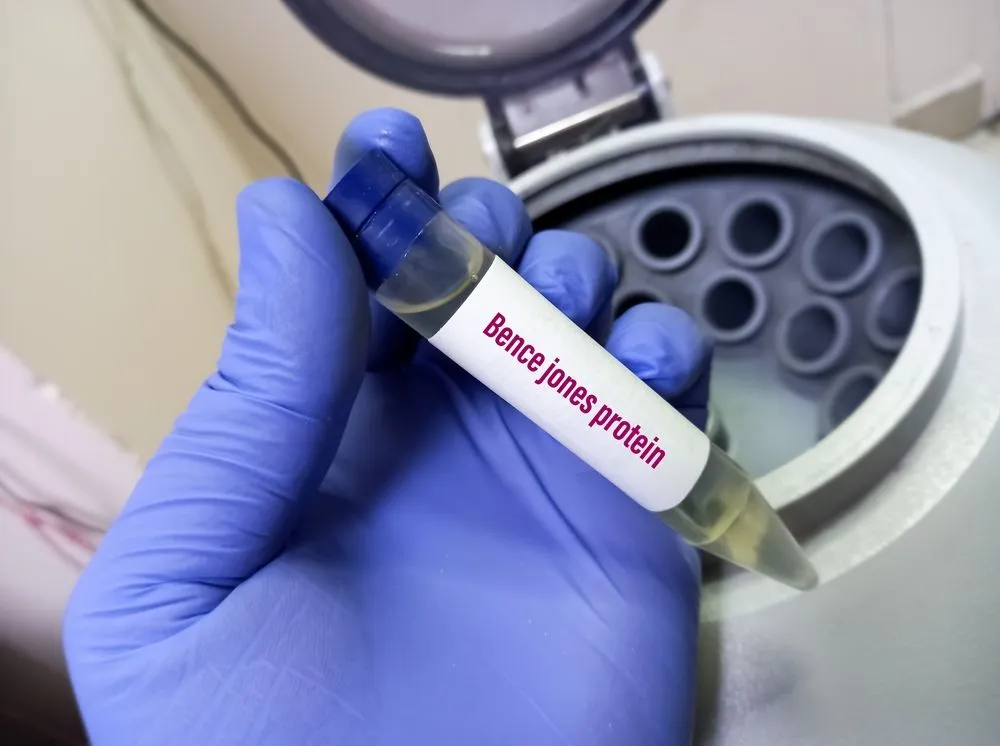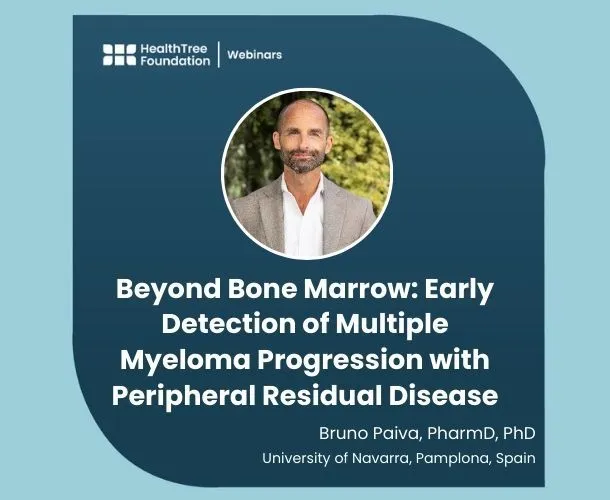Managing MGUS and Smoldering Myeloma: Current Strategies and Future Directions

For patients diagnosed with precursor diseases like MGUS (Monoclonal Gammopathy of Undetermined Significance) or Smoldering Multiple Myeloma (SMM), the uncertainty of whether or when the condition might progress to active multiple myeloma can be overwhelming. While these diagnoses don’t carry the same urgency as multiple myeloma, they require vigilant monitoring to catch potential disease progression early.
At the 2024 International Myeloma Society (IMS) conference in Rio de Janeiro, Brazil, some of the world’s leading myeloma experts shared the latest research on how these conditions are managed and the exciting future of treatment options.
Current Approaches to Risk Stratification and Monitoring
When managing MGUS and SMM, one of the primary goals is to determine which patients are at higher risk of progressing to active multiple myeloma. Several risk stratification models have been developed to help doctors assess this progression risk.
Established Models for Stratification:
-
Mayo Clinic 2008 Model: One of the earlier models focusing on specific clinical markers.
-
PETHEMA: A Spanish-based risk assessment tool.
-
IMWG 20/2/20 Model: A widely used tool that assigns risk based on three key factors—percentage of plasma cells in the bone marrow, serum monoclonal protein (M-spike), and the level of free light chains.
-
IMWG + FISH: The most recent model, incorporating genetic analysis through FISH (Fluorescence In Situ Hybridization) to enhance risk predictions.
As Dr. Irene Ghobrial, a leading expert in precursor myeloma at Dana-Farber Cancer Institute, shared during the IMS conference, “While these models help us identify patients who are more likely to progress, we’re finding that monitoring dynamic changes over time, such as shifts in tumor biology and immune factors, gives us a better picture of what’s truly happening.”
She emphasized the importance of looking beyond static clinical markers and incorporating more personalized approaches to risk monitoring.
In addition to these models, researchers are paying increasing attention to:
-
Monitoring tumor burden: Tracking changes in M-spike levels, light chains, and bone marrow plasma cell percentages.
-
Circulating tumor cells and genomic alterations: These advanced techniques, still being researched, could one day allow doctors to predict progression based on blood samples alone, bypassing the need for invasive bone marrow biopsies.
-
Environmental and immune factors: Variables such as age, obesity, inflammation, and even a patient’s microbiome might play roles in disease progression.
Future Directions: Predicting and Preventing Disease Progression
The future of managing precursor multiple myeloma lies in further refining how doctors can predict the likelihood of progression and developing interventions to prevent it. At the IMS 2024 conference, several promising developments were highlighted:
-
Dynamic Models: Dr. Ghobrial and her team are working on more dynamic models, such as PANGEA 2.0, which analyzes patient data over time to better assess progression risk. “By observing biological changes in real-time, we’re seeing that patients can be more accurately stratified, even those who may have been classified as low risk initially,” Dr. Ghobrial explained. Early studies have shown that this model can detect patients at high risk who might have been overlooked by traditional models.
-
Genomic Profiling: In active multiple myeloma, doctors already use genomic data to understand the specific genetic alterations driving the disease. Dr. Bruno Paiva, a leading researcher in this field, discussed how genomic profiling in precursor diseases could lead to more personalized treatment approaches. “By examining genetic markers in MGUS and SMM, we hope to identify which patients are most likely to progress and intervene earlier,” he said. Blood-based genomic tests may one day replace bone marrow biopsies for these insights. For more information, watch here: Unveiling Novel Biomarkers in Myeloma: The Role of CTCs & cfDNA | Bruno Paiva, PhD | IMS 2024
-
Immune System Insights: A growing area of research focuses on the immune system’s role in precursor myeloma. Patients with MGUS or SMM often have immune systems that age prematurely. This “maladaptive aging” might explain why some people progress to active myeloma. Dr. Ghobrial shared her insights on this topic, stating, “We’re learning more about how immune dysfunction contributes to progression. In the future, therapies may target not just the tumor cells but also the immune environment to prevent disease development.”
-
Screening and Early Detection: Dr. Sigurjón Kristjánsson, who leads the groundbreaking Icelandic ISTOPMM study, presented new data on large-scale screenings for MGUS and SMM at the IMS conference. His research has shown that early detection of precursor diseases helps refine risk stratification models and improve outcomes. “What we’ve learned is that patients who are diagnosed through screenings experience little long-term psychological distress, which counters the common concern that early diagnosis causes undue anxiety,” Dr. Kristjánsson noted. These findings support expanding screening efforts to detect precursor diseases early.
-
High-Risk SMM and Early Treatment: Dr. María-Victoria Mateos from Spain presented results from clinical trials showing that treating high-risk SMM patients with lenalidomide and dexamethasone (len/dex) can significantly reduce progression to active disease. “We’re seeing that early intervention with treatments like len/dex can delay time to progression and perhaps extend overall survival,” Dr. Mateos shared during her presentation. Ongoing trials explore whether more aggressive therapies, including immunotherapies, could further delay or prevent progression to active myeloma. More information can be found in her interview here: Future Directions & Challenges in MM Precursor Conditions
Moving Toward a Cure?
The ultimate goal in managing precursor multiple myeloma is not just to delay progression but to prevent or even cure the disease before it becomes life-threatening. During the IMS conference, Dr. Mateos highlighted the promising results of the GEM-CESAR study in Spain, where high-risk SMM patients are being treated with combination therapies designed to achieve minimal residual disease (MRD) negativity. “These patients are achieving deep responses that may one day allow us to declare them cured,” Dr. Mateos said.
While we’re not yet at the point of declaring a cure for precursor myeloma, the progress being made is promising. Researchers like Dr. Ghobrial, Dr. Mateos, and Dr. Paiva are leading the charge in developing early interventions that could fundamentally change the course of this disease.
A Bright Future for Patients and Families
For patients diagnosed with MGUS or smoldering myeloma, and their loved ones, the future of managing these conditions is brighter than ever. As Dr. Paiva said, “We are moving toward a future where we can identify those at risk of progression earlier, treat them more effectively, and perhaps one day prevent active multiple myeloma entirely.”
By staying informed, maintaining regular check-ups with your healthcare provider, and discussing any concerns about risk and treatment options, you can feel more confident about your future. The research presented at IMS 2024 in Rio de Janeiro shows that with each step forward, we’re moving closer to a world where progression to active myeloma might be preventable or even curable.
You can continue your learning by joining our MGUS and SMM community, where you can attend webinars just for precursor myeloma patients and their loved ones.
For patients diagnosed with precursor diseases like MGUS (Monoclonal Gammopathy of Undetermined Significance) or Smoldering Multiple Myeloma (SMM), the uncertainty of whether or when the condition might progress to active multiple myeloma can be overwhelming. While these diagnoses don’t carry the same urgency as multiple myeloma, they require vigilant monitoring to catch potential disease progression early.
At the 2024 International Myeloma Society (IMS) conference in Rio de Janeiro, Brazil, some of the world’s leading myeloma experts shared the latest research on how these conditions are managed and the exciting future of treatment options.
Current Approaches to Risk Stratification and Monitoring
When managing MGUS and SMM, one of the primary goals is to determine which patients are at higher risk of progressing to active multiple myeloma. Several risk stratification models have been developed to help doctors assess this progression risk.
Established Models for Stratification:
-
Mayo Clinic 2008 Model: One of the earlier models focusing on specific clinical markers.
-
PETHEMA: A Spanish-based risk assessment tool.
-
IMWG 20/2/20 Model: A widely used tool that assigns risk based on three key factors—percentage of plasma cells in the bone marrow, serum monoclonal protein (M-spike), and the level of free light chains.
-
IMWG + FISH: The most recent model, incorporating genetic analysis through FISH (Fluorescence In Situ Hybridization) to enhance risk predictions.
As Dr. Irene Ghobrial, a leading expert in precursor myeloma at Dana-Farber Cancer Institute, shared during the IMS conference, “While these models help us identify patients who are more likely to progress, we’re finding that monitoring dynamic changes over time, such as shifts in tumor biology and immune factors, gives us a better picture of what’s truly happening.”
She emphasized the importance of looking beyond static clinical markers and incorporating more personalized approaches to risk monitoring.
In addition to these models, researchers are paying increasing attention to:
-
Monitoring tumor burden: Tracking changes in M-spike levels, light chains, and bone marrow plasma cell percentages.
-
Circulating tumor cells and genomic alterations: These advanced techniques, still being researched, could one day allow doctors to predict progression based on blood samples alone, bypassing the need for invasive bone marrow biopsies.
-
Environmental and immune factors: Variables such as age, obesity, inflammation, and even a patient’s microbiome might play roles in disease progression.
Future Directions: Predicting and Preventing Disease Progression
The future of managing precursor multiple myeloma lies in further refining how doctors can predict the likelihood of progression and developing interventions to prevent it. At the IMS 2024 conference, several promising developments were highlighted:
-
Dynamic Models: Dr. Ghobrial and her team are working on more dynamic models, such as PANGEA 2.0, which analyzes patient data over time to better assess progression risk. “By observing biological changes in real-time, we’re seeing that patients can be more accurately stratified, even those who may have been classified as low risk initially,” Dr. Ghobrial explained. Early studies have shown that this model can detect patients at high risk who might have been overlooked by traditional models.
-
Genomic Profiling: In active multiple myeloma, doctors already use genomic data to understand the specific genetic alterations driving the disease. Dr. Bruno Paiva, a leading researcher in this field, discussed how genomic profiling in precursor diseases could lead to more personalized treatment approaches. “By examining genetic markers in MGUS and SMM, we hope to identify which patients are most likely to progress and intervene earlier,” he said. Blood-based genomic tests may one day replace bone marrow biopsies for these insights. For more information, watch here: Unveiling Novel Biomarkers in Myeloma: The Role of CTCs & cfDNA | Bruno Paiva, PhD | IMS 2024
-
Immune System Insights: A growing area of research focuses on the immune system’s role in precursor myeloma. Patients with MGUS or SMM often have immune systems that age prematurely. This “maladaptive aging” might explain why some people progress to active myeloma. Dr. Ghobrial shared her insights on this topic, stating, “We’re learning more about how immune dysfunction contributes to progression. In the future, therapies may target not just the tumor cells but also the immune environment to prevent disease development.”
-
Screening and Early Detection: Dr. Sigurjón Kristjánsson, who leads the groundbreaking Icelandic ISTOPMM study, presented new data on large-scale screenings for MGUS and SMM at the IMS conference. His research has shown that early detection of precursor diseases helps refine risk stratification models and improve outcomes. “What we’ve learned is that patients who are diagnosed through screenings experience little long-term psychological distress, which counters the common concern that early diagnosis causes undue anxiety,” Dr. Kristjánsson noted. These findings support expanding screening efforts to detect precursor diseases early.
-
High-Risk SMM and Early Treatment: Dr. María-Victoria Mateos from Spain presented results from clinical trials showing that treating high-risk SMM patients with lenalidomide and dexamethasone (len/dex) can significantly reduce progression to active disease. “We’re seeing that early intervention with treatments like len/dex can delay time to progression and perhaps extend overall survival,” Dr. Mateos shared during her presentation. Ongoing trials explore whether more aggressive therapies, including immunotherapies, could further delay or prevent progression to active myeloma. More information can be found in her interview here: Future Directions & Challenges in MM Precursor Conditions
Moving Toward a Cure?
The ultimate goal in managing precursor multiple myeloma is not just to delay progression but to prevent or even cure the disease before it becomes life-threatening. During the IMS conference, Dr. Mateos highlighted the promising results of the GEM-CESAR study in Spain, where high-risk SMM patients are being treated with combination therapies designed to achieve minimal residual disease (MRD) negativity. “These patients are achieving deep responses that may one day allow us to declare them cured,” Dr. Mateos said.
While we’re not yet at the point of declaring a cure for precursor myeloma, the progress being made is promising. Researchers like Dr. Ghobrial, Dr. Mateos, and Dr. Paiva are leading the charge in developing early interventions that could fundamentally change the course of this disease.
A Bright Future for Patients and Families
For patients diagnosed with MGUS or smoldering myeloma, and their loved ones, the future of managing these conditions is brighter than ever. As Dr. Paiva said, “We are moving toward a future where we can identify those at risk of progression earlier, treat them more effectively, and perhaps one day prevent active multiple myeloma entirely.”
By staying informed, maintaining regular check-ups with your healthcare provider, and discussing any concerns about risk and treatment options, you can feel more confident about your future. The research presented at IMS 2024 in Rio de Janeiro shows that with each step forward, we’re moving closer to a world where progression to active myeloma might be preventable or even curable.
You can continue your learning by joining our MGUS and SMM community, where you can attend webinars just for precursor myeloma patients and their loved ones.

about the author
Audrey Burton-Bethke
Audrey is a content writer and editor for the HealthTree Foundation. She originally joined the HealthTree Foundation in 2020. Audrey loves spending time with her supportive husband, energetic four-year-old, and new baby.
More on Treatment Advances
Upcoming Events




Get the Latest Multiple Myeloma Updates, Delivered to You.
By subscribing to the HealthTree newsletter, you'll receive the latest research, treatment updates, and expert insights to help you navigate your health.













